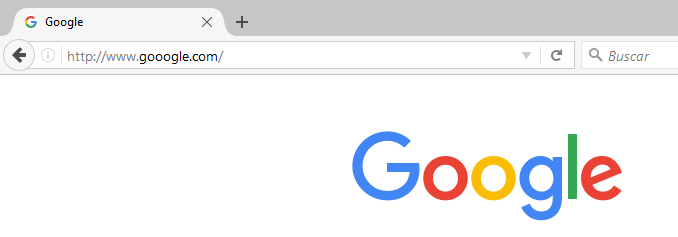Should You Get Creative With Your Domain Name?
These days, you have a lot of options when it comes to registering a new domain name. There are dozens of Top-Level Domains (TLD) you can choose from for your URLs, and this enables people to pull off some creative combinations. The real question is whether it’s a good idea to use those combinations or not.
You can, for example, use TLDs such as .blog or .wiki to let people know upfront what your website is about. Or you can try to work in a TLD as part of the site’s name – like tri.be does. The range of potential combinations is nearly endless, and so are the branding opportunities that are open to you.
In this article, we’re going to talk about the pros and cons of getting creative with your domain name. Then we’ll go over three simple tips to make sure your next domain hits the mark. Let’s get started!
The Pros and Cons of Using Creative Domain Names

When we talk about getting creative, we don’t mean incorporating overly long names or random strings of letters into your domains. Instead, we’re going to focus on how using different TLDs can enable you to come up with unique combinations, such as toureiffel.paris.
Most people believe that a .com domain is the only viable option, but that hasn’t been true for a long time. In fact, the Internet Corporation for Assigned Names and Numbers (ICANN) is constantly approving new TLDs. Aside from looking cool, these alternatives can offer you many benefits, such as:
- Allowing for cheaper domain registration and renewals. Taking advantage of a unique TLD can save you plenty of money when it comes to registering your domain.
- Telling people what your site is all about. A TLD such as .shop or .wiki tells visitors exactly what to expect from your site.
- Providing a novelty factor. A lot of popular websites use lesser-known TLDs these days, but they’re still not a common sight in some circles. That means they can provide your site with a bit of a novelty factor and make its domain easier to recall.
Bear in mind, though, that using a creative TLD has its downsides. In some cases, people might take you less seriously based on your domain name, or they might forget that you’re using .blog and try reaching your site using .com. However, as long as you put some thought into choosing your domain you should be alright, even if you don’t stick to traditional naming conventions.
3 Tips to Ensure You Get the Most Out of a Creative Domain Name
Opting for an unusual domain name doesn’t mean that you should choose yours recklessly. Here are three simple tips to make the best possible decision.
1. Consider Combining Your Name With Your TLD

The easiest and most popular branding trick is to incorporate your TLD as part of your site’s name. Take driftaway.coffee, for example. It’s a short, simple name that’s made even more memorable thanks to its TLD.
The novelty factor also comes into play here, because a lot of people don’t expect .coffee domains to exist. Therefore, the choice makes your site both memorable and interesting. Plus, you can often snag these types of TLDs for cheap, as we mentioned earlier. You can also get create by using a unique, premium TLD!
If you decide to go this route, here are three tips to ensure that you choose well:
- Stick to TLDs that have something to do with your website’s niche.
- Don’t try to force a combination if a natural one isn’t available.
- Incorporate your TLD as part of your branding, so people won’t confuse your site with a .com alternative. For example, Driftaway Coffee uses its full domain name on its branding, instead of just Driftaway.
There are thousands of TLDs available, so chances are you’ll be able to come up with a combination that suits you if you give it a little thought. Just visit your favorite registrar and see what options they have.
2. Keep Your Domain Names Simple

When it comes to domain names, shorter is almost always better. The reason for this is simple – it makes your website’s name easier to remember. Imagine for a second that Wikipedia’s primary domain was wikipediathefreeencyclopedia.org. Would you think (or even want) to type that into your browser? Plus, using a short name makes your life simpler when it comes to designing your branding and all of your marketing elements.
If you’re still not sure what your next domain name should be, here are a few tips to help you out:
- Come up with multiple options. You can always discard those you don’t like or that aren’t available for registration.
- Stick to names that are easy to type and spell out, to keep things simple.
- If you want to get creative, use your TLD as part of your website’s name to save even more characters.
Naturally, not all domain names need to be the exact same length. If you find a name that you feel is perfect, go with your gut unless it’s outrageously long.
3. Use Creative TLDs to Secure Variations of Your Primary Domain

One of the main upsides to using innovative TLDs is that you can purchase variations of your primary domain name. Take Amazon, for example – they have their .com domain, but they also own several others, such as Amazon.shop. This enables them to secure domains that other people might try to use to impersonate them, and catch users who mistype their primary domain.
Some people will even sit on domains just to try and sell them to you at a later date, so it makes sense to pick up any alternatives that you think could benefit you before that happens. The only downside is that you will need to factor in the cost of owning and redirecting an alternative TLD (which is usually quite low).
Conclusion
Some people think that when it comes to registering a domain, it’s best to find a .com option and call it a day. While traditional domains have few downsides, you have many more options available to you these days in the form of non-traditional TLDs.
Let’s go over our three simple tips to ensure you get the most out of your creative domain names:
- Consider combining your domain name with your TLD.
- Keep your domain name simple.
- Use creative TLDs to secure variations of your primary domain.
Image credit: Pixabay.




